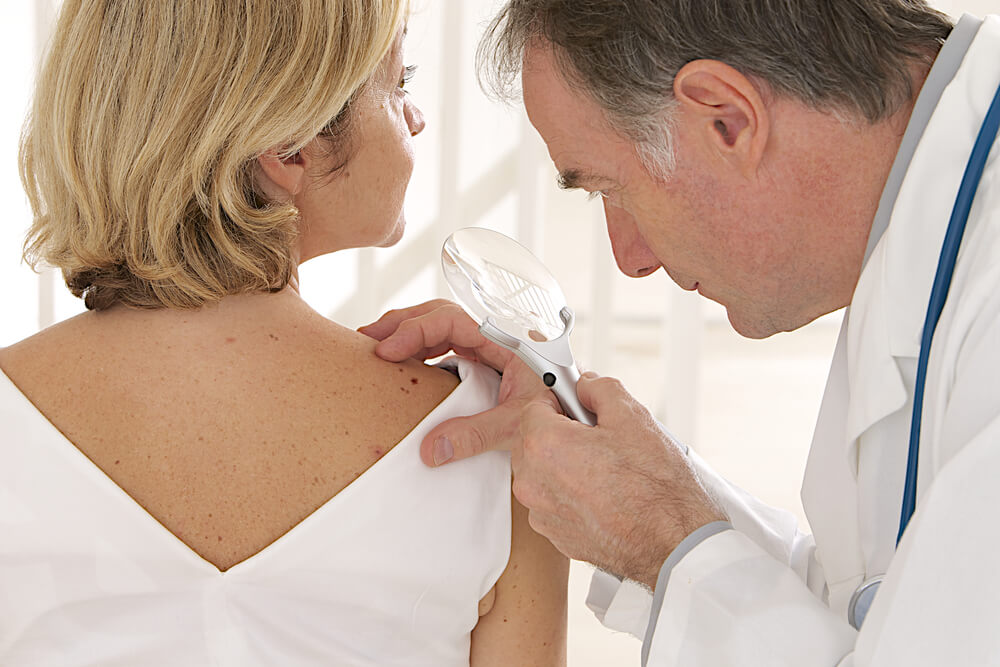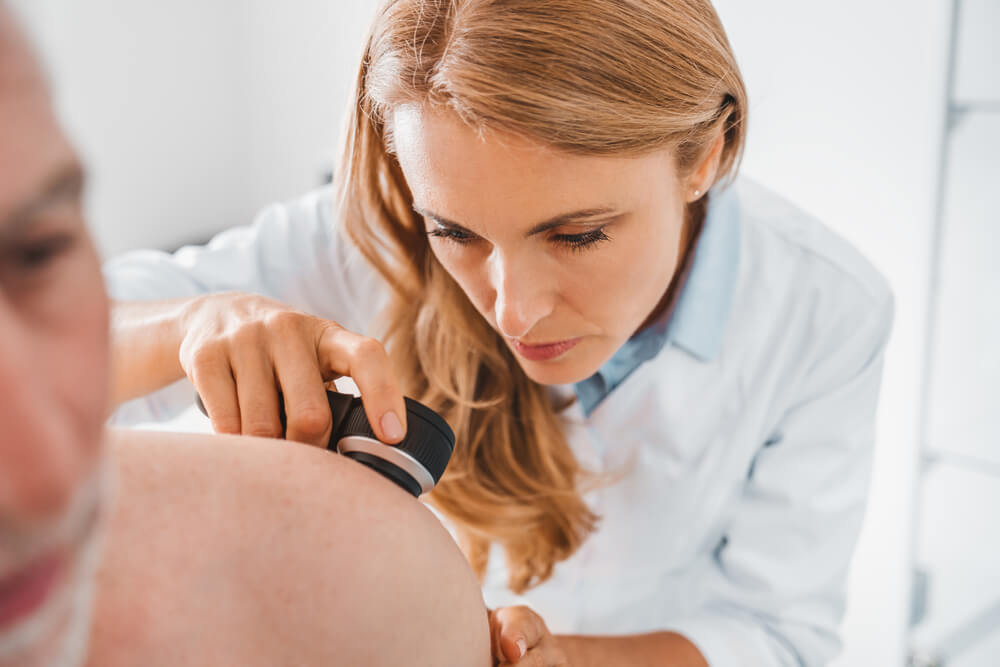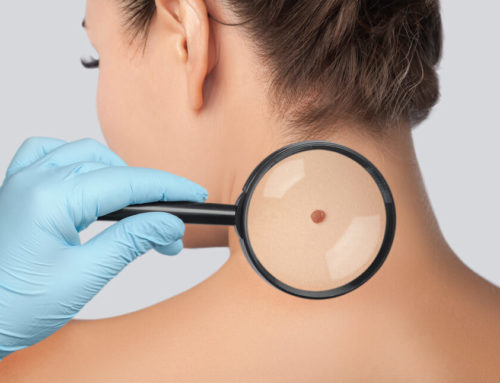Actinic keratosis is a pre-cancerous skin condition caused by exposure to the sun’s ultraviolet rays. It often appears as a scaly, red lesion on the skin that is usually not painful. While it is not cancerous, it can develop into one if left untreated. There is more than one actinic keratosis treatment available, including photodynamic therapy, cryotherapy, and topical therapies.
This article will provide a general overview of actinic keratosis so you can familiarize yourself with the condition, recognize if you have it, and know what to expect.
What Is Actinic Keratosis?
As we have already mentioned, actinic keratosis is a pre-cancerous skin condition that is caused by exposure to the sun’s ultraviolet rays. UV radiation can damage the DNA in the skin cells, leading to the development of actinic keratosis. The condition typically appears as a scaly, red lesion on the skin.
What Does Actinic Keratosis Look Like?
Actinic keratosis often looks like a scaly, red patch on the skin. The lesions can vary in size, from a few millimeters to several centimeters in diameter.
The pain and redness associated with actinic keratosis can make it difficult to tell the difference between this condition and skin infection. However, if you have any doubts, it is best to consult a Board Certified Dermatologist.
What Does Actinic Keratosis Look Like: Locations

Actinic keratosis can appear anywhere on the body that has been exposed to the sun’s UV radiation. The lesions are most commonly found on the face, neck, hands, and arms. However, they can also occur on the legs, scalp, and chest. So, what does actinic keratosis look like on different parts of the body? The good news is, there’s no difference in appearance.
It takes time for the damage from UV radiation to manifest as actinic keratosis. The lesions may not appear for years after the initial exposure to the sun’s rays.
What Is Hypertrophic Actinic Keratosis?
Hypertrophic actinic keratosis is a more severe form of actinic keratosis. The lesions are larger, deeper, thicker, and more raised than regular actinic keratosis. This type of actinic keratosis is more likely to develop into cancer than the regular form.
However, not all cases of hypertrophic actinic keratosis will progress to cancer. If you have this condition, it is important to monitor it closely. You can also contact our specialist, Dr. Jason Green if any changes occur.
How Long Does It Take for Actinic Keratosis to Become Cancerous?
In fact, actinic keratosis doesn’t even always have to become cancerous. If left untreated, the condition has the potential to become malignant. However, asking how long does it take for actinic keratosis to become cancerous can be tricky, as answers will vary from case to case.
It’s important to monitor the lesions for changes and see a Board Certified Dermatologist if any concerns arise.
How Long Does It Take For Actinic Keratosis to Become Cancerous: Other Symptoms
Some people may experience other symptoms along with actinic keratoses, such as:
- Dryness
- Itching
- Burning
- Swelling
These symptoms can vary from person to person and may not all be present in every case.
What Are Actinic Keratosis Treatment Options?
There are a number of actinic keratosis treatment options available. The most common treatments are photodynamic therapy, cryotherapy, and topical therapies.
Photodynamic Therapy for Actinic Keratosis Overview
Photodynamic therapy (PDT) is a treatment that uses light and a photosensitizing drug to destroy the lesion. Photodynamic therapy for actinic keratosis works on two fronts. First, the drug is applied to the lesion and then activated by light. The light is from a narrowband LED lamp.
Photodynamic therapy for actinic keratosis is one of the most common types of treatment. It is effective in removing the lesions and does not cause any scarring.
How Does Actinic Keratosis Cryotherapy Work?
Cryotherapy is a treatment that uses cold to destroy the lesion. The lesion is frozen with liquid nitrogen and then thawed. This process is repeated several times until the lesion is destroyed.
Actinic keratosis cryotherapy is also a very common and effective treatment option, that causes minor discomfort.
Topical Therapies for Actinic Keratosis
Aside from actinic keratosis cryotherapy and PDT, topical therapies can be applied. There are a number of different topical therapies available, including:
- 5-fluorouracil (5-FU)
- Imiquimod
- Diclofenac
- Trichloroacetic acid (TCA)
5-fluorouracil is the most common topical therapy for actinic keratosis. It is a cream that is applied to the lesion. It is effective in removing the lesions and does not cause any scarring.
Imiquimod is a cream that is applied to the lesion. It is effective in removing the lesions and does not cause any scarring.
TCA is a cream that is applied to the lesion.. It is effective in removing the lesions and does not cause any scarring. However, it can be painful and may leave a scar.
What Is The Outlook of Actinic Keratosis?
The outlook of actinic keratosis depends on the severity of the condition and the treatment options that are available. Most cases of actinic keratosis can be treated successfully and do not cause any long-term problems.
It’s important to monitor the lesions and see a Board Certified Dermatologist if any concerns arise.
Is There A Way To Prevent Actinic Keratosis?

There are a few things you can do to reduce your risk of developing the condition:
- Avoid excessive sun exposure
- Use sunscreen when outdoors
- Wear a hat and sunglasses when in the sun
- Stay in the shade as much as possible
These measures can help reduce your risk of developing actinic keratosis. However, they cannot guarantee that you will not develop the condition.
Conclusion
Hopefully, this article has given you a better understanding of actinic keratosis. The condition is a common skin problem that can occur in people who are frequently exposed to the sun. There are a number of treatment options available, including photodynamic therapy, cryotherapy, and topical creams, so you don’t have to worry about living with this condition and developing cancer immediately.
What are your thoughts on actinic keratosis? Our Board Certified Dermatologist would love to hear about your experiences and opinions. Tell us more at your next appointment, but call (954) 481-0650 to book first.



